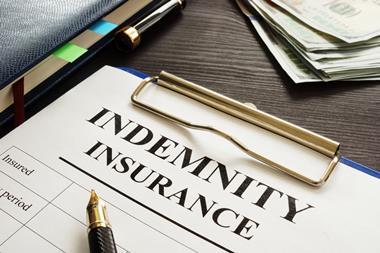The top 10* answer the big questions - fraud, the fallout from the Callery vs Gray judgment, the impact of premium and discount rates - and give their thoughts on the future for the motor sector.
1 Norwich Union
Share of accounting class: 26.3%
Private motor policies: Powerpoint/Private Car Club (intermediary)
Private Car (direct)
Commercial motor policies: These products are all offered through the intermediary distribution channel: Premier Truck, Premier Van, Taxi, Special Types (including agricultural vehicles), Minifleet, Fleetwise
Motorcycle: Premier Bike (intermediary), Motorcycle (direct)
Flagship policy: Each product is important in relation to its own market. In terms of volume, the private car product is the most important product.
Biggest motor segment: Private car. Within this product, it aims to compete across to a broad range of risks and appeal to a wide variety of customer segments.
Most used distribution channel: Intermediary
Risk management initiatives? It has encouraged risk management for many years. For example, it provides premium discounts to policyholders who complete approved driving training courses or fit certain security devices.
Its most recent initiative has been the launch of Roadsense, which uses the principles of risk management to bring fleets cost savings. In addition, Roadsense helps fleets maximise the economy and safety of their fleet and its drivers.
Do you think premiums in the sector still need to rise? If so, why?
Norwich Union expects rates will continue to rise in the motor market over the next six months, but average premium increases will slow to around a 10% cumulative effect on renewals by the end of 2001.
The recent change in the Ogden discount rate from 3% to 2.5% will drive some of this increase. Also, although premium increases are now outpacing claims costs, there is still a need for premiums to increase to an adequate level to ensure a return to profit.
Further premium increases in the longer term may be driven by:
What effect does motor insurance fraud have on your company?
The main impact of motor insurance fraud across the market is to increase claims costs, which in turn leads to increased insurance premiums for all policyholders. Norwich Union is working to reduce fraud through a variety of initiatives. For example, we combat fraud through appropriate claims processes and provide training on spotting fraud for claims handlers.
What effect do you think the recent drop in discount rates will have?
The recent drop in discount rates will increase the cost of bodily injury claims and so is likely to lead to further rate increases across the market. We estimate the cost to the market of this change to be in the region of £140m.
What will have the biggest effect on the motor sector in the next two years?
There are a number of key factors which will impact on the motor sector over the next two years. These include further claims inflation, technology developments and the potential for further regulation of the insurance industry.
However, the biggest impact on the whole of the financial services industry will come from increasing customer expectations. Providers that want to survive in a competitive market place will need to ensure they truly understand and meet customers' needs.
2 Royal and Sunalliance (R&SA)
Share of accounting class: 15.3%
Private motor policies: Drive is its main policy for new business for brokers. A new direct motor product was launched last year.
Commercial motor policies: Fleetshield, Enterprise Vans, Excelerator, Business Carshield
Motorcycle: Some scheme business only
Flagship policy: Drive, launched in 1998, is its flagship broker policy. The new More Th>n policy is its direct offering.
Biggest motor segment: Motor fleet and private car
Most used distribution channel: Broker channel
Risk management initiatives: R&SA offers a comprehensive total fleet management solution.
Also, the creation of its in-house team of consultants will provide a comprehensive risk management service that will help customers reduce accidents, create a safety culture among drivers and, ultimately, reduce the operating costs, which includes hidden and unevaluated costs as well as the cost of insurance.
Do you think premiums in the sector still need to rise? If so, why?
In short, the answer is yes. The performance of the motor insurance industry has been poor and, over the past 18 months, we have taken a strong underwriting stance in this area of business to bring stability to the market.
Recent events have highlighted the need for adequate pricing and reserving. Also, further changes to Ogden discount rates will have a significant impact on motor injury settlement costs and, ultimately, future premium levels.
What effect does motor insurance fraud have on your company?
Sadly, the industry is faced with an increasing trend in fraudulent claims, including staged accidents. We have therefore recently established special investigations units, which are dedicated to investigating suspicious and fraudulent claims to confirm the actual cause of an accident, who is responsible and whether any losses can be recovered. We have also invested in the Hunter system, which for the first time involves insurers sharing data for fraud purposes.
How do you view current service standards in the motor insurance sector?
Generally, our service standards remain among the best in the industry, although we cannot become complacent and are constantly seeking improvements.
What effect will Callery vs Gray have on the sector?
Uncertainty surrounding these issues had led to defendant insurers being reluctant to settle claims for costs and underwriters being unable to accurately reflect the financial impact in their premiums.
The judgment will naturally have an impact upon claims and underwriting.
What effect do you think the recent drop in discount rates will have?
Early estimates (from Bacon & Woodrow) suggest the increase for the insurance industry in current and future costs will be in the order of £45m across motor and liability classes, while the probable retrospective costs could run to £175m. This is on the basis that the current discount rates have reduced from 3% to 2.5%.
What will have the biggest effect on the motor sector in the next two years?
3 Axa
Share of accounting class: 9.7%
Private motor policies: Conwy, Premier 35
Commercial motor policies: Motor fleet, Haulage, Goods carrying vehicle, Motor trade, Agricultural vehicle, Special types
Motorcycle: Notable scheme business
Other: Classic car, Motor caravan
Flagship policy: Conwy
Biggest motor segment: Private car
Most used distribution channel: Intermediary
Do you think premiums in the sector still need to rise? If so, why?
Yes. Continuing rise in claims costs.
What effect does motor insurance fraud have on your company?
In common with all insurers, there is an element of premiums made up of detecting and investigating fraudulent claims.
How do you view current service standards in the motor insurance sector?
Good and improving.
What effect will Callery vs Gray have on the sector?
This is an element of claims inflation that will only serve to push premiums higher.
What effect do you think the recent drop in discount rates will have?
Yet another element of the claims inflation equation.
What will have the biggest effect on the motor sector in the next two years?
Continuing prevalence of the claims culture, offset by consolidation in the sector.
4 Zurich Financial Services
Share of accounting class: 9.3%
Private motor policies: Zurich Personal Insurance - Zurich Car, Solution policy, Eagle Star - Eagle Star car policy, Zurich UK Commercial - Fleet and non fleet policies
Commercial motor policies: This is provided through Zurich UK Commercial
Flagship policy: Zurich Personal Insurance - Zurich Car Solutions, Eagle Star - Car Motor
Most used distribution channel: Both brokers and direct access play a vital role as distribution channels.
Do you think premiums in the sector still need to rise? If so, why?
There is a need for insurers to work as smart as they can with regards to pricing and risk selection. This may mean some sectors of the market will see greater movement in price than others.
What effect does motor insurance fraud have on your company?
Our losses within this area are unquantified. However, we take fraud very seriously within the Zurich and will proactively challenge any fraudulent activities made for the benefit of our customers and the company.
How do you view current service standards in the motor insurance sector?
Zurich Personal Insurance's service surveys show consistent, excellent results - 82% of our customers rated our service as good to excellent.
What effect will Callery vs Gray have on the sector?
This really depends on what is considered a reasonable premium for after the event insurance, which is yet to be confirmed. But, as it stands, the decision is likely to have an effect on claims costs and hence rates.
What effect do you think the recent drop in discount rates will have?
Obviously this is something we need to consider. It is likely to cause an overall base rate increase, but we are considering our position at this stage
What will have the biggest effect on the motor sector in the next two years?
The imminent arrival of a soft market is forecast by some analysts, so would be a major concern if it happened. Further impact from influences out of the control of insurers (like the discount rate charge) are of concern, as it is difficult to prepare for the unknown.
5 Direct Line
Share of accounting class: 8.9%
Biggest motor segment: Private motor
Most used distribution channel: Telephone
Do you think premiums in the sector still need to rise? If so, why?
We do not anticipate seeing the kind of price rises recently predicted by Datamonitor. If our prices do rise, it will be a reflection of the increasing cost of settling claims.
What effect does motor insurance fraud have on your company?
Motor insurance fraud continues to blight all insurers and therefore is a key concern for Direct Line. New insurance industry data sharing initiatives such as Cifas (the UK fraud avoidance system) and the Hunter fraud prevention system are helping us to identify and prevent motor insurance fraud.
It is critical that the insurance industry tackles this type of crime in a non-competitive and cohesive manner, thereby ensuring premiums can be kept down and that genuine policyholders are not penalised.
How do you view current service standards in the motor insurance sector?
Good.
What effect will Callery vs Gray have on the sector?
The recent legal changes were designed to promote easier access to justice for claimants. Within Direct Line, we ensure we proactively handle claims, making key decisions at the right time. We aim to work with our customers and their representatives to resolve an injury compensation claim to ensure it is dealt with correctly and as quickly as possible.
What effect do you think the recent drop in discount rates will have?
This change will be felt on the more expensive and complex cases. Direct Line already has a policy of working co-operatively with claimants and their representatives on the more serious injury cases to ensure that there is a focus on the claimant and their needs. This includes working with rehabilitation providers. However, we continue to explore alternative ways of settling our larger claims, such as structured settlements.
What will have the biggest effect on the motor sector in the next two years?
The internet.
6 Cornhill
Share of accounting class: 5%
Cornhill is divided into trading divisions. The largest broker division in terms of premium income is Allianz Cornhill. The international division, Allianz Cornhill International, focuses on national and International corporate customers and their brokers.
Private motor policies (Allianz Cornhill): Motor Cover, Premium Saver, Horizon
Commercial motor policies (Allianz Cornhill): Commercial Vehicle
Flagship policy (Allianz Cornhill): Horizon
Biggest motor segment (Allianz Cornhill): Mid-range vehicles
Most used distribution channel: Allianz Cornhill: brokers through nationwide branch (commercial) and call centre (personal) structure.
Allianz Cornhill International: national brokers.
Risk management initiatives: Allianz Cornhill launched a "How Am I Driving" road safety initiative for fleet drivers, designed to improve driving standards.
Do you think premiums in the sector still need to rise? If so, why?
Yes, to deal with rising claims, the drop in interest rates and an increasingly litigious society.
What effect does motor insurance fraud have on your company?
Regrettably, there is a high level of fraud in motor insurance, principally via false vehicle theft reports, staged accidents and the concealment of the real risk when the insurance is first arranged. The cost is high and would get worse if we did not take proper measures to identify and challenge such fraud.
Establishing counter measures has resulted in significant investment in personnel, new procedures and training and the development of IT systems that can help to identify patterns of fraud. In all that, we take care to ensure honest policyholders are inconvenienced as little as possible.
How do you view current service standards in the motor insurance sector?
Industry standards can only be described as just above average at present.
What effect will Callery vs Gray have on the sector?
Potentially substantial, but the decision thus far is only partial. The decision that "reasonable" after the event (ATE) premiums are recoverable in fast-track road traffic personal injury claims brings a degree of clarity, but how this interacts with before the event (BTE) cover or what is "reasonable" is still up in the air. The Court of Appeal's decision to reduce the success fee from 40% uplift in costs to 20% is welcome. But, again, the two-stage approach which Lord Woolf advocates is confusing and requires working through.
What effect do you think the recent drop in discount rates will have?
Will have only a marginal effect overall, as the impact on claims will be small.
What will have the biggest effect on the motor sector in the next two years?
The beginning of a return to a "soft market" together with:
7 Winterthur
Answered by subsidiary company Churchill Insurance
Share of accounting class: 4.8%
Private motor policies: Churchill Car Insurance and branded policies on behalf of partners
Flagship policy: Churchill sells a single car policy contract to its customers, not a series of different versions.
Biggest motor segment: Private car insurance
Most used distribution channel: Its private car portfolio is primarily derived from the direct market. However, broker panels and strategic partners are assuming an increasingly important role.
Do you think premiums in the sector still need to rise? If so, why?
Premiums do need to rise in the marketplace in order to recoup prior year losses experienced by some insurers within the industry and to meet and fund ongoing and future claims cost inflation. Churchill does not underwrite unprofitable motor insurance, but understands that some companies have been pricing aggressively for market share over the past 12 months.
What effect does motor insurance fraud have on your company?
We treat motor insurance fraud extremely seriously. To combat this market problem, we have an anti-fraud unit and share data with others on insurance and financial services anti-fraud databases.
How do you view current service standards in the motor insurance sector?
We believe the service provided by some of our competitors has improved as they seek to keep up with Churchill.
What effect do you think the recent drop in discount rates will have?
We believe car insurance premiums will need to rise by between 1% and 2% in light of this ruling.
What will have the biggest effect on the motor sector in the next two years?
Premium levels. The motor market has suffered huge losses over recent years, with profitability slowly improving. The latest market trends suggest we are now entering into a period of price cutting - we believe this is a position the market cannot sustain in the medium term.
8 Fortis
Share of accounting class: 3.4%
Private motor policies: Motor Guard
What has been your flagship policy this year: Fortis has a single motor product which contains all cover variations and services all segments of its chosen market.
Biggest motor segment: Private motor
Most used distribution channel: Intermediary market only
Risk management initiatives: Fortis has introduced a proactive intervention activity whereby it contacts innocent third-party drivers to offer repair and replacement vehicle facilities.
Do you think premiums in the sector still need to rise? If so, why?
In overall terms, the market has not produced a satisfactory return on capital, suggesting further increases are needed. Upward pressure on claims costs are continuing, emphasising the need for these increases.
What effect does motor insurance fraud have on your company?
While the true cost of motor insurance fraud is impossible to determine, it is a significant factor in the motor claims spend. We have raised staff awareness of the various types of fraud and have no hesitation in reporting fraudulent activity to the police.
How do you view current service standards in the motor insurance sector?
The provision of a quality service remains vital. We have published our own service standards and are always looking at ways to reduce response times still further.
What effect will Callery vs Gray have on the sector?
Motor claims costs will increase, with continued resultant pressure upon premium.
What effect do you think the recent drop in discount rates will have?
The recent drop was not entirely unexpected and serves only to further increase pressure upon premium.
What will have the biggest effect on the motor sector in the next two years?
Undoubtedly the market is beginning to soften and this will start to impact results. However, the major effect may come from the changing structure of the market, ie. mergers producing more powerful players, new entrants and the development of new technologies and distribution channels.
9 NFU Mutual
Share of accounting class: 2.9%
Private motor policies: NFU Mutual Motor
Commercial motor policies: NFU Mutual Commercial Vehicles
Other: NFU Mutual Vintage Commercial, NFU Mutual Horse box, NFU Tractor
Most used distribution channel: Tied agents
Do you think premiums in the sector still need to rise? If so, why?
While we firmly believe premiums do need to continue to rise, competitive pressures probably mean that the level of increases seen by policyholders are unlikely to be as high this year as they have been for the past two years. The cost and frequency of bodily injury claims continues to rise and legislative changes such as Ogden and the use of conditional fee arrangements (CFAs) will add significantly to the cost. The predicted downturn in the economy may lead to a rise in theft claims and may also affect premiums.
What effect does motor insurance fraud have on your company?
Fraud continues to be a significant factor in the motor insurance market. We have established a unit that specialises in the investigation of fraudulent claims and it is our policy to report appropriate cases to the police and co-operate fully with them to secure prosecutions.
How do you view current service standards in the motor insurance sector?
It is recognised that service standards have been impacted by the merger and acquisition activity within the industry. We survey our customers regularly and have established that our service levels are consistently above average. We are working hard to further enhance service delivery by comparing what we offer both against our competitors in the insurance industry and, importantly, against the performance of other service-related industries.
What effect will Callery vs Gray have on the sector?
We believe this will increase the frequency and the cost of bodily injury claims. The majority of personal injury claims do not tend to be settled within the protocol period of three months and we are therefore likely to see an increase in claimants' solicitors costs.
What effect do you think the recent drop in discount rates will have?
As the change is retrospective, this is likely to have a significant impact on insurers' liabilities.
What will have the biggest effect on the motor sector in the next two years?
Regulatory aspects and the continuing increase in the frequency and average cost of bodily injury claims (including legal costs resulting from the development of CFAs).
10 Groupama
Share of accounting class: 2.6%
Private motor policies: Optima
Commercial motor policies: Optima Van, Groupama Fleet
Motorcycle: Optima Multibike, Optima Unibike
Flagship policy: Optima is its main standard product
Biggest motor segment: Drivers over 35 years of age
Most used distribution channel: Purely intermediary based - telesales, affinities, high street and chains
Risk management initiatives: Within the past two years, Groupama has entered into a partnership with Peak Performance Management to offer tailored risk management advice and solutions to fleet customers. These services incorporate risk assessment, specialist driver training, administrative advice and the development of online training.
* The Top 10 is based on "AM Best's 1999 % Share of Accounting Class", as seen in the 2000 Top 50 Insurers Supplement. Percentages are share of total gross premiums of listed Top 50.
Hosted by comedian and actor Tom Allen, 34 Gold, 23 Silver and 22 Bronze awards were handed out across an amazing 34 categories recognising brilliance and innovation right across the breadth of UK general insurance.













































